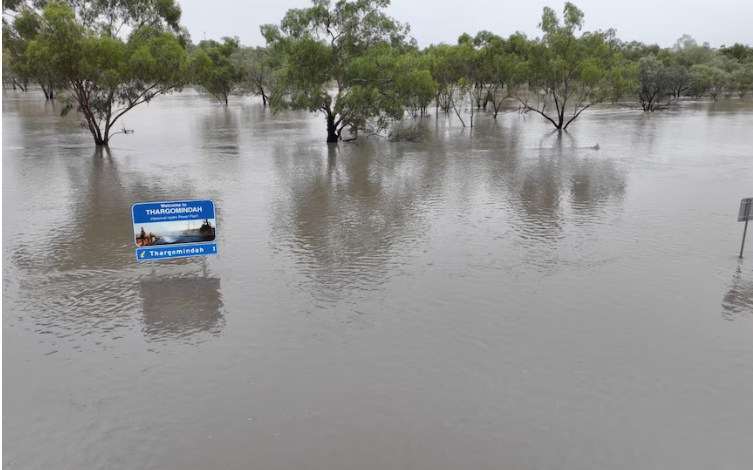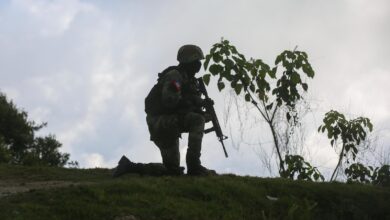Flooding twice the size of Victoria in outback Qld

Over 200 individuals gathered at Thargomindah airport to spend the night as floodwaters loomed over the area.
The entire population of the southwest Queensland town evacuated to the airport’s higher ground after the nearby levee broke.
Nancy Sparks, a local resident, mentioned, “Sections of the levee bank had deteriorated over the past few days – the water flow was just too much to handle.”
Residents made their way to the airport on Monday night as floodwaters surpassed the local record of 6.78m.
By Tuesday, the water levels had reached 7.5m and were still rising.
Bulloo Shire Mayor John Ferguson expressed, “I believe we are reaching the peak, although the water levels are still rising in town. Hopefully, we are nearing the end of the worst of it.”
The town’s population, around 220 individuals, relocated to a council depot on Tuesday but might have to spend another night at the airport amidst the worst flooding in over 50 years.
“This is worse than the floods of 1974,” remarked Ms. Sparks.
“The situation is quite devastating for our small town, but we are trying our best to stay strong.”
The vast floods affecting western and southern inland Queensland are unprecedented, with no signs of relief in sight.
Locals have been cautioned that water levels could rise again as the remnants of ex-tropical cyclone Dianne are expected to bring more rainfall.
The most intense rainfall is predicted to hit southern Queensland and northern NSW on Wednesday, with some areas expecting over 100mm of rainfall.
Further rainfall will exacerbate the challenges faced by graziers, raising concerns that some might lose their entire livestock.
Homes have been demolished, roads are impassable, and fences have been damaged, leading to numerous evacuations in the region.
The military is assisting in supplying feed for livestock, although over 100,000 sheep and cattle are presumed lost.
The full extent of the damage will only be evident once the floods recede, a process that could take weeks.
“The devastation is beyond measure,” stated Queensland Premier David Crisafulli.
Local helicopter pilots have united to provide aid, rescuing the residents of Adavale in the southwest, which has a population of approximately 30 people.
They have also collaborated to deliver food and fodder for livestock, as many roads have been blocked or severely damaged due to flooding.
“Many of the creeks are still swollen, and the accessible roads have suffered significant erosion,” explained Anne-Maree Lloyd, who had to evacuate her Jedburgh homestead near the Barcoo River.
“Delivering supplies to where they are needed is a major challenge at the moment due to the extensive flooding.”
Major flood alerts have been issued from the Northern Territory border through central and southern inland Queensland down to NSW.
Communities in NSW are anticipated to be cut off for more than two months following additional rainfall.
“The substantial rainfall in Queensland is gradually moving through the catchment and flowing into western NSW,” informed NSW SES Commissioner Mike Wassing during a press briefing.
“Some communities might face isolation for six to ten weeks.”
Back in Thargomindah, some locals worked tirelessly for over 24 hours to safeguard the town, only for the floodwaters to breach the levee.
However, Mayor Ferguson mentioned that despite the imminent flood threat, the community’s spirits remained high.
“I cannot commend the community enough. Everyone has come together,” he added.





